Le sentier des Terrasses (Les Coteaux de la Citadelle)
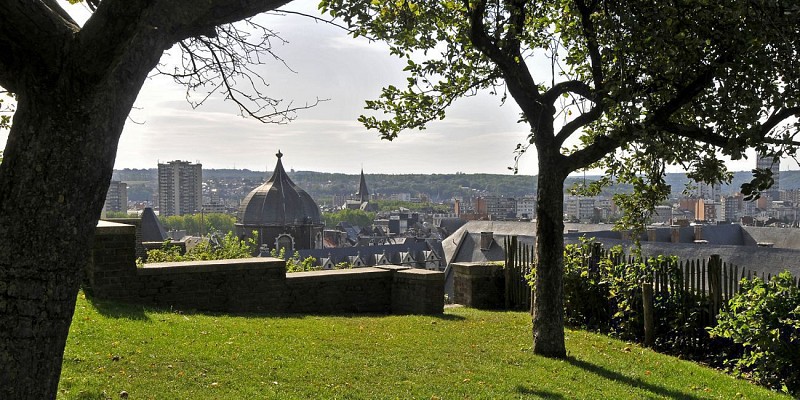
Description
Linking rue Pierreuse to the top of the Montagne-de-Bueren staircase, this area has several viewpoints over the city and vast grassy terraces. You will see remains of the old monastery of the Minims brothers, the mediaeval tower of a Teutonic commandry, high walls of sandstone and rubble stonework, or the old beguinage along this itinerary overlooking the city’s rooftops.
Technical Information
Altimetric profile
Starting point
Points of interest

Teutonic commandry
This magnificent building, located at the junction of rue Pierreuse and rue du Palais, was constructed between 1634 and 1657. It was the seat of the Saint-André commandry of the Teutonic Order of Liège, whose property also included the terraces situated behind these buildings. The Teutonic knights settled in Liège in the 13th century, and although the history books mainly recall their conquests in eastern Europe, they also had several commandries in our regions. They managed properties such as parishes and their church, which were major sources of revenue for the Order. In Liège, the commandry administered the churches of Saint-Gangulphe and Saint-André. As a special feature, the commandry of Liège was headed by a priest who held the title of “grand-pasteur”.
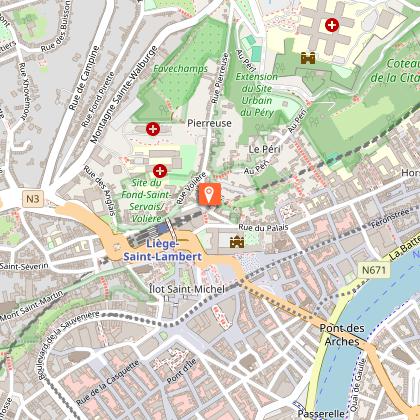
Gatehouse of the Monastery of the Minims
At 38 rue Pierreuse, a passage in a house leads to the path up to the Terraces. The entrance is decorated with a work of art by Roland Breucker that evokes vegetables. At the top of the three first flights of steps, a semi-dome dug into the wall marks the start of the path that accesses the Monastery of the Minims. Called a porterie (gatehouse), this site was probably a chapel. Over the top you can see the inscription Charitas, a reminder of the Minims’ motto. The renovation works that recreated the access to the monastery, in particular through the house, were done in the early 2000s with European subsidies (European Regional Development Fund).
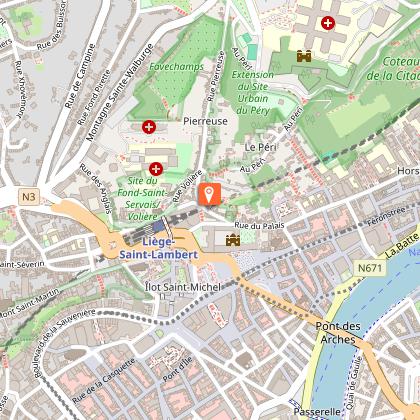
Monastery of the Minims
On arriving at the top, the path runs along thick walls and a few remains of the monastery’s church. There is hardly anything left of the monastery itself. Requisitioned in the Revolution, and later sold, it is split up into different properties nowadays. Nevertheless, quite a few remains are still visible, for example, the long façade behind the footbridge, which conserves an inscription “Charitas” that is identical to the one over the entrance to the gatehouse.
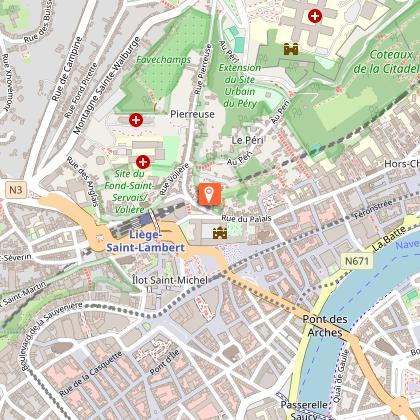
The Order of the Minims brothers
Wishing to present itself as the humblest order (hence its name “Minims”), it was founded in the 15th century by Saint Francis of Paola. Present in Liège from the 17th century, the Minims practised a kind of perpetual Lent that meant their diet had no meat, eggs, butter or cheese. Their monastery was built during the 15th century and the church was completed in the early 17th century. Requisitioned during the Revolution, it was then abandoned before being sold in 1798.

The terraces
The terraces spaced out in the lower part of the city belonged to the Order of the Teutonic knights. The view from the top has always dazzled travellers. Saumery (1690-1767), in a book titled “Les délices du pays de Liège” (the delights of the area around Liège) described the view as follows: “These terraces have a number of viewpoints to discover the city, the valley, the river and several mountains and fine landscapes located to the east, south and west”. Even today, these terraces offer an exceptional view over the city, which extends up the valley.
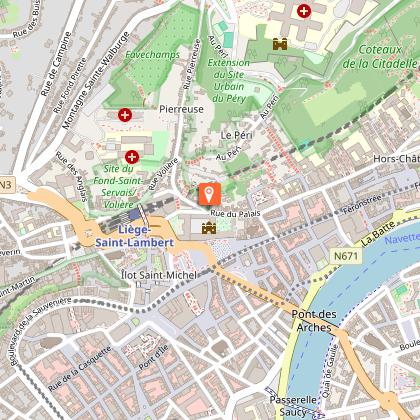
Tour des Vieux-Joncs
This tower, called Vieux-Joncs (old reeds), belonged to the Teutonic commandry of Liège. It is one of the oldest civil buildings in the city, with its lowest part dating from before 1423. The upper part was built in the 16th century and was used as an office by the grand-pasteur. As for the name Vieux-Joncs, it refers to the Land commandry of Alden Biesen, which means ‘old reeds’ in Dutch and was the seat of the ‘bailiwick of the reeds’ that reported to the commandry of Liège.
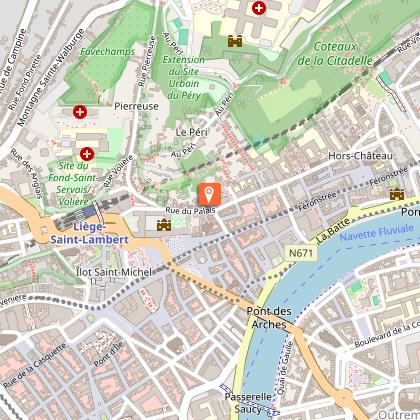
Bois des Mineurs
At the end of the terraces, the wood of the Mineurs (the congregation that occupied the monastery that can be seen below) is an unexpected wooded area that contrasts with the neighbouring terraces. As well as several plants such as wild garlic, white deadnettle or hedge garlic, the site contains many interesting tree essences such as magnolia, catalpa, chestnut, sycamore maple or ash.
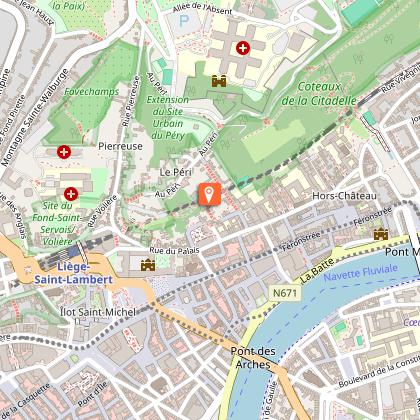
Impasse des Ursulines
The name of this impasse (dead end) goes back to the congregation of the Ursulines, whose 17th-century monastery is still partly visible at the bottom of the Montagne-de-Bueren staircase. It appears as a kind of small maze with alleyways that climb the hill of the citadel parallel to the staircase. With walls that support cloisters and living quarters, traces of ancient constructions are still visible.

Old relais postal (post office)
Located at the bottom of the impasse des Ursulines, several magnificent half-timbered façades illustrate this construction technique very well. They are part of an old post office that was located in rue Saint-Jean-Baptiste. The façade was put back in its original place in the 1970s with the aim of creating an open-sky architectural museum. Not far from these half-timbered façades you can admire a fine coat of arms topped by a horn. To one side, according to local legend, the hammered stone would have borne the coat of arms of the Thurn und Taxis, a well-known family who set up a major postal service across Europe.
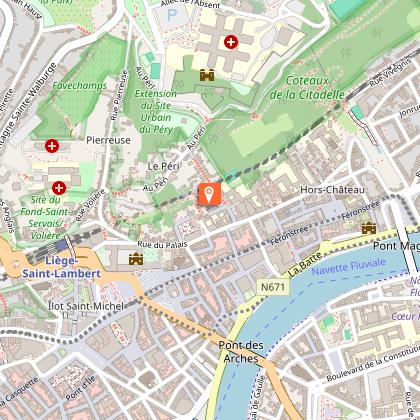
Beguinage du Saint-Esprit
Now occupied by a brewery, the old beguinage of Saint-Esprit (Holy Spirit) owes its name to its founder. As recalled by the motto embedded in one of its walls, it was an idea created in 1614 by city mayor Philippe le Rousseau, nicknamed ‘Saint-Esprit’, and his wife. The origin of this nickname was a room belonging to the family that had the banner of Saint-Esprit over it. Bought by the City and restored in the second half of the 20th century, the beguinage was occupied by the Architecture Museum for a short period. As witnesses to the now-disappeared museum, several architectural elements decorate the terraces that come from the four corners of the city.
Additional information
Signalétique (EN)
No signage
